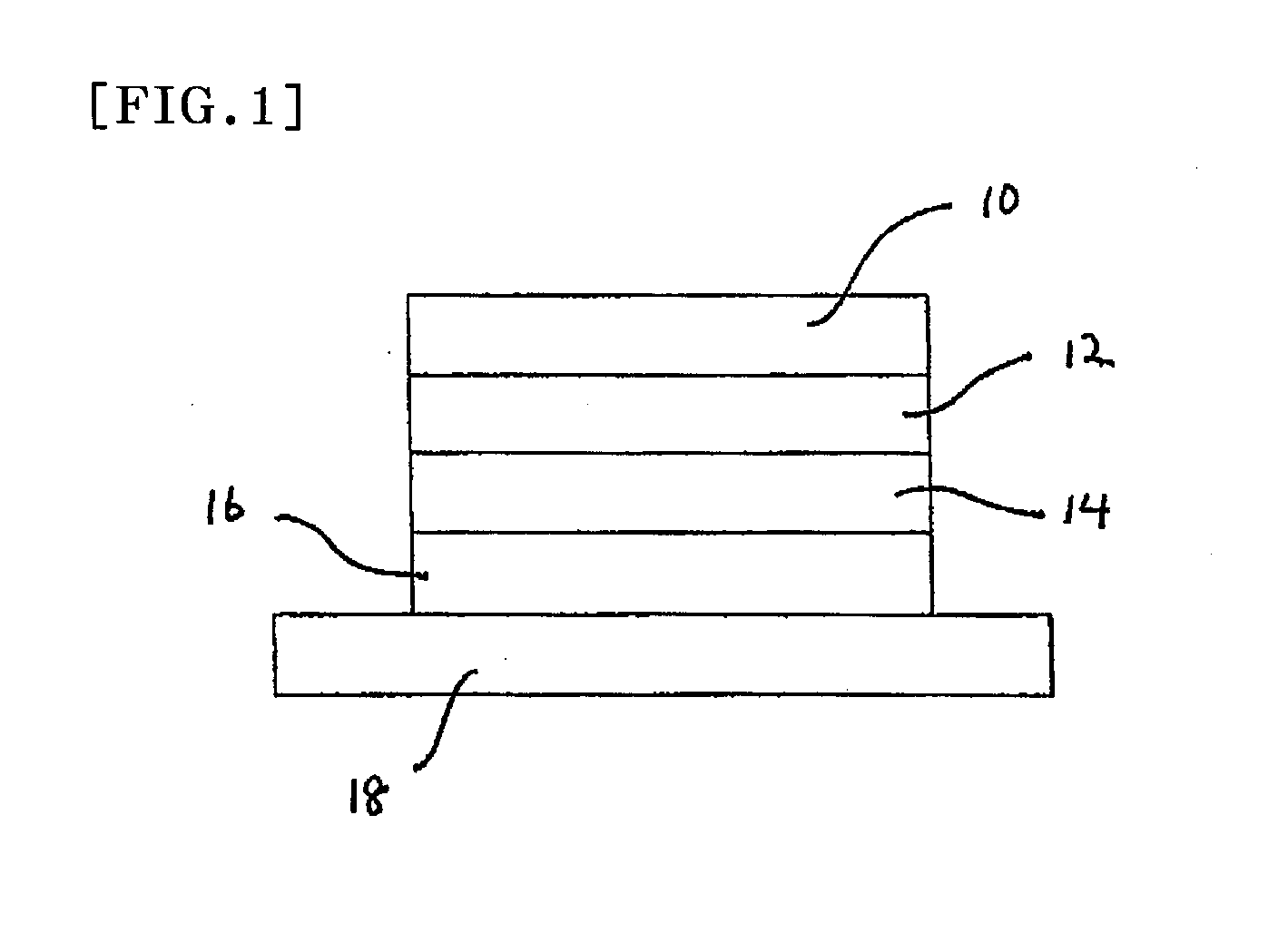Pressure-sensitive adhesive composition, pressure-sensitive adhesive layer, process for producing the pressure-sensitive adhesive layer, and optical member with pressure-sensitive adhesive
a technology of pressure-sensitive adhesives and compositions, applied in the direction of metal layered products, pretreated surfaces, synthetic resin layered products, etc., can solve the problems of increasing the risk of displacement, lifting or separation, and difficulty in providing sufficient durability with conventional techniques, and achieve excellent pressure-sensitive adhesive properties and excellent durability.
- Summary
- Abstract
- Description
- Claims
- Application Information
AI Technical Summary
Benefits of technology
Problems solved by technology
Method used
Image
Examples
example 1
Preparation of Pressure-Sensitive Adhesive Layer (B)-Attached Retardation Film)
[0201]To the solution of the acrylic polymer (b), based on 100 parts by weight of the solids of the solution, was added 0.6 parts by weight of a polyisocyanate crosslinking agent including a trimethylolpropane-tolylene diisocyanate adduct as a crosslinking agent (Coronate L manufactured by Nippon Polyurethane Industry Co., Ltd.) so that an acrylic pressure-sensitive adhesive solution (b) was prepared.
[0202]The acrylic pressure-sensitive adhesive solution (b) was then applied to one side of a silicone-treated polyethylene terephthalate (PET) film (38 μm in thickness manufactured by Mitsubishi Polyester Film Corporation), dried at 130° C. for 3 minutes to form a pressure-sensitive adhesive layer (B), which had a thickness of 20 μm after drying.
[0203]The pressure-sensitive adhesive layer (B) was transferred to a retardation film (Arton, a norbornene film, manufactured by JSR Corporation) so that a pressure-s...
example 2
Preparation of Pressure-Sensitive Adhesive Layer (A2)-Attached Polarizing Plate)
[0207]To the solution of the acrylic polymer (a2), based on 100 parts by weight of the solids of the solution, were added 0.15 parts by weight of dibenzoyl peroxide (with a half life of one minute at 130° C.) acting as a crosslinking agent and 0.6 parts by weight of a polyisocyanate crosslinking agent including a trimethylolpropane-tolylene diisocyanate adduct (Coronate L manufactured by Nippon Polyurethane Industry Co., Ltd.) so that an acrylic pressure-sensitive adhesive solution (2) was prepared.
[0208]The acrylic pressure-sensitive adhesive solution (2) was then applied to one side of a silicone-treated polyethylene terephthalate (PET) film (38 μm in thickness manufactured by Mitsubishi Polyester Film Corporation), dried and crosslinked at 150° C. for 3 minutes to form a pressure-sensitive adhesive layer (A2), which had a thickness of 5 μm after drying. The pressure-sensitive adhesive layer (A2) had a...
example 3
Preparation of Pressure-Sensitive Adhesive Layer (A3)-Attached Polarizing Plate)
[0211]To the solution of the acrylic polymer (a2), based on 100 parts by weight of the solids of the solution, were added 0.15 parts by weight of di(4-tert-butylcyclohexyl)peroxydicarbonate (with a half life of one minute at 92.1° C.) acting as a crosslinking agent and 0.6 parts by weight of a polyisocyanate crosslinking agent including a trimethylolpropane-tolylene diisocyanate adduct (Coronate L manufactured by Nippon Polyurethane Industry Co., Ltd.) so that an acrylic pressure-sensitive adhesive solution (3) was prepared.
[0212]The acrylic pressure-sensitive adhesive solution (3) was then applied to one side of a silicone-treated polyethylene terephthalate (PET) film (38 μm in thickness manufactured by Mitsubishi Polyester Film Corporation), dried and crosslinked at 150° C. for 3 minutes to form a pressure-sensitive adhesive layer (A3), which had a thickness of 5 μm after drying. The pressure-sensitive...
PUM
| Property | Measurement | Unit |
|---|---|---|
| thickness | aaaaa | aaaaa |
| Tg | aaaaa | aaaaa |
| Tg | aaaaa | aaaaa |
Abstract
Description
Claims
Application Information
 Login to View More
Login to View More - R&D
- Intellectual Property
- Life Sciences
- Materials
- Tech Scout
- Unparalleled Data Quality
- Higher Quality Content
- 60% Fewer Hallucinations
Browse by: Latest US Patents, China's latest patents, Technical Efficacy Thesaurus, Application Domain, Technology Topic, Popular Technical Reports.
© 2025 PatSnap. All rights reserved.Legal|Privacy policy|Modern Slavery Act Transparency Statement|Sitemap|About US| Contact US: help@patsnap.com


